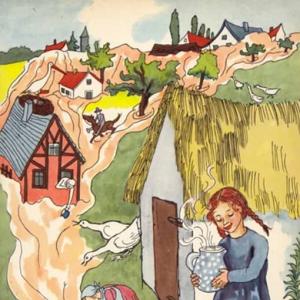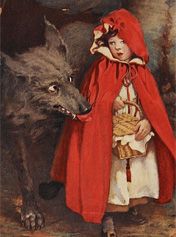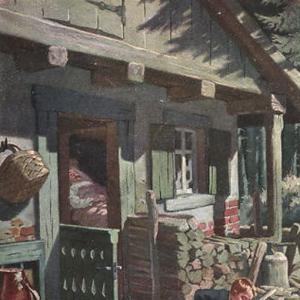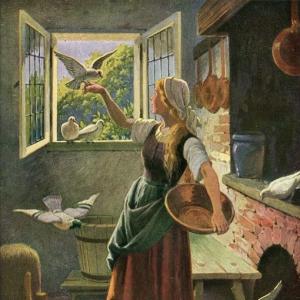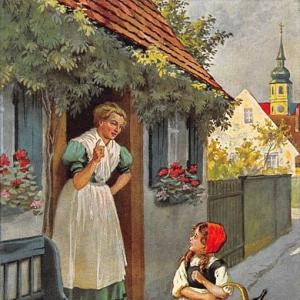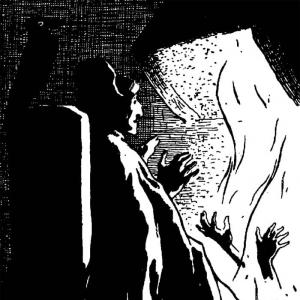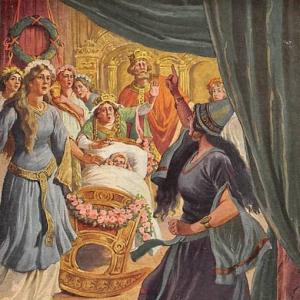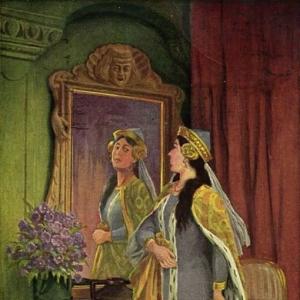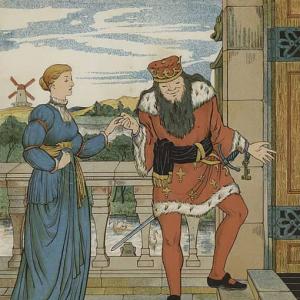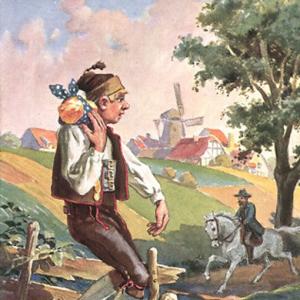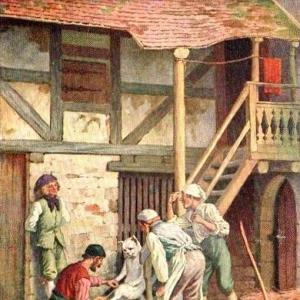Reading time: 5 min
When God had created the world and was about to fix the length of each creature’s life, the ass came and asked, „Lord, how long shall I live?“ – „Thirty years,“ replied God; „does that content thee?“ – „Ah, Lord,“ answered the ass, „that is a long time. Think of my painful existence! To carry heavy burdens from morning to night, to drag sacks of corn to the mill, that others may eat bread, to be cheered and refreshed with nothing but blows and kicks. Relieve me of a portion of this long time.“ Then God had pity on him and relieved him of eighteen years. The ass went away comforted, and the dog appeared. „How long wouldst thou like to live?“ said God to him. „Thirty years are too many for the ass, but thou wilt be satisfied with that.“ – „Lord,“ answered the dog, „is that thy will? Consider how I shall have to run, my feet will never hold out so long, and when I have once lost my voice for barking, and my teeth for biting, what will be left for me to do but run from one corner to another and growl?“ God saw that he was right, and released him from twelve years of life. Then came the monkey. „Thou wilt certainly live thirty years willingly?“ said the Lord to him. „Thou hast no need to work as the ass and the dog have to do, and wilt always enjoy thyself.“ – „Ah! Lord,“ he answered, „it may seem as if that were the case, but it is quite different. When it rains porridge I have no spoon. I am always to play merry pranks, and make faces which force people to laugh, and if they give me an apple, and I bite into it, why it is sour! How often sadness hides itself behind mirth! I shall never be able to hold out for thirty years.“ God was gracious and took off ten. At last man appeared, joyous, healthy and vigorous, and begged God to appoint his time for him. „Thirty years shalt thou live,“ said the Lord. „Is that enough for thee?“ – „What a short time,“ cried man, „when I have built my house and my fire burns on my own hearth. When I have planted trees which blossom and bear fruit, and am just intending to enjoy my life, I am to die! O Lord, lengthen my time.“ – „I will add to it the ass’s eighteen years,“ said God. „That is not enough,“ replied the man. „Thou shalt also have the dog’s twelve years.“ – „Still too little!“ – „Well, then,“ said God, „I will give thee the monkey’s ten years also, but more thou shalt not have.“ The man went away, but was not satisfied.
So man lives seventy years. The first thirty are his human years, which are soon gone. Then is he healthy, merry, works with pleasure, and is glad of his life. Then follow the ass’s eighteen years, when one burden after another is laid on him, he has to carry the corn which feeds others, and blows and kicks are the reward of his faithful services. Then come the dog’s twelve years, when he lies in the corner, and growls and has no longer any teeth to bite with, and when this time is over the monkey’s ten years form the end. Then man is weak- headed and foolish, does silly things, and becomes the jest of the children.
 Learn languages. Double-tap on a word.Learn languages in context with Childstories.org and Deepl.com.
Learn languages. Double-tap on a word.Learn languages in context with Childstories.org and Deepl.com.Backgrounds
Interpretations
Adaptions
Summary
Linguistics
„The Duration of Life“ is a fairy tale collected by the Brothers Grimm, who were German scholars, linguists, and cultural researchers named Jacob and Wilhelm Grimm. They are best known for their work in the early 19th century, collecting and publishing German folklore and fairy tales in a book titled „Kinder- und Hausmärchen“ (Children’s and Household Tales), first published in 1812.
The Brothers Grimm were part of the Romantic movement in Europe, which focused on the importance of national identity, folklore, and cultural heritage. Their work aimed to preserve traditional stories passed down through generations, reflecting the values and wisdom of their time. As a result, their collection of fairy tales became an essential part of German literature and folklore.
While the Brothers Grimm did not write the stories themselves, they compiled, edited, and published them in a way that made them accessible to a broader audience. Over time, their work gained popularity and has been translated into numerous languages, influencing literature, popular culture, and the study of folklore worldwide.
„The Duration of Life“ is one of the lesser-known stories from their collection, but it offers valuable insights into human nature, the stages of life, and the importance of perspective and gratitude. The tale, like many others in their collection, has been passed down through oral tradition, reflecting the cultural wisdom and values of the time.
„The Duration of Life“ offers multiple interpretations that can be drawn from the story, particularly focusing on the nature of life and the human experience. Some interpretations include.
Stages of life: The story highlights the different stages of human life, starting from youth and vitality to the later years, characterized by increasing burdens and declining health. This interpretation showcases the cyclical nature of life and the importance of understanding and accepting each stage.
Perspective on life: Each creature in the story views their life through the lens of their unique experiences and challenges, emphasizing the subjective nature of life. This interpretation serves as a reminder that everyone faces different trials and tribulations, and it is essential to consider the perspectives of others when examining the quality of life.
Gratitude and contentment: The man in the story is unsatisfied with his lifespan despite receiving additional years from the other creatures. This interpretation suggests that humans often struggle with contentment and gratitude, always seeking more than they have. Learning to appreciate and make the most of the time given is essential for a fulfilling life.
The human condition: The tale offers a reflection on the human condition, with the various phases of life highlighting the inescapable aspects of aging, responsibility, and mortality. This interpretation serves as a reminder that no one is exempt from these universal experiences, and it is crucial to embrace life with wisdom and humility.
Social commentary: The story can also be seen as a critique of societal expectations and the roles assigned to individuals throughout their lives. The allocation of years and the challenges faced by each creature may represent the unfair distribution of labor and the burdens placed on certain members of society.
Overall, „The Duration of Life“ provides a rich and thought-provoking narrative that invites readers to reflect on the nature of life, the human experience, and the importance of empathy, gratitude, and acceptance.
„The Duration of Life“ is a lesser-known fairy tale from the Brothers Grimm collection that has inspired a few adaptations in various forms of media. Here are some examples.
Film adaptations: The story has been adapted into several short films, including the 2015 animated short film „The Duration of Life“ directed by Mathieu Labaye and the 2020 short film „The Fate of Things“ directed by Paulo Patoleia.
Theater productions: The tale has been adapted for the stage in various productions, including the 2016 production of „The Duration of Life“ by the Pig Iron Theater Company, which used the story as a starting point to explore themes of mortality and aging.
Literary adaptations: The story has also been adapted into novels and short stories, including „The Duration of Life“ by Frank Stockton, a short story that uses the same premise of a man who can determine the duration of life for others.
Music: The story has also inspired musical compositions, such as the song „Die Lebensdauer“ by German composer Kurt Weill, which is based on the tale and explores the themes of mortality and the transience of life.
Artistic adaptations: The tale has also been adapted into various art forms, including illustrations and paintings. One notable example is the 1882 painting by German artist Adolph Menzel, titled „The Duration of Life,“ which depicts a group of people gathered around a clock, emphasizing the theme of the passage of time and the inevitability of death.
Overall, „The Duration of Life“ has inspired various adaptations in different forms of media, highlighting the universal and timeless themes explored in the tale.
„The Duration of Life“ is a fairy tale by the Brothers Grimm that explores the different stages of life as experienced by humans and various animals. When God created the world and was about to decide the lifespan of each creature, the ass, the dog, and the monkey all asked for a reduction in the years initially assigned to them due to the hardships they would face.
The ass initially received 30 years, but asked for a reduction due to its burden-filled life of carrying heavy loads and receiving little appreciation. God reduced the ass’s lifespan by 18 years. The dog, who was also offered 30 years, requested a decrease due to the strain of running and eventual loss of its ability to bark and bite. God lessened the dog’s life by 12 years. The monkey, too, was granted 30 years but asked for a reduction, as its seemingly carefree life was often filled with disappointment and sadness. God took away 10 years from the monkey’s life.
When it was man’s turn, he was initially granted 30 years. However, he argued that this was too short, especially given the time needed to build a life and enjoy it. God agreed to add the years taken from the ass, dog, and monkey, totaling 70 years for man. Man was not satisfied, but God refused to give him more years.
The tale concludes by explaining that the different stages of man’s life consist of the human years (first 30 years), the ass’s years (next 18 years), the dog’s years (following 12 years), and the monkey’s years (final 10 years). Each stage represents different phases of life, with changing responsibilities, burdens, and eventual decline in physical and mental abilities.
The fairy tale „The Duration of Life“ by the Brothers Grimm is a short, allegorical narrative that explores themes related to the burdens and stages of life through the lens of linguistic and literary devices.
Here is a linguistic analysis of the tale:
Dialogical Structure
Dialogues as Structural Device: The tale is structured around dialogues between God and four creatures: the ass, the dog, the monkey, and man. These dialogues serve as the framework for the narrative, driving the progression of events and the distribution of years among the creatures.
Characterization through Dialogue
Personification and Character Voices: Each animal’s personality and life challenges are conveyed through its speech. The ass is burdened and weary, the dog is concerned about the physical toll of life, the monkey discusses the hollowness beneath apparent pleasure, and man exhibits ambition and dissatisfaction with mortality.
Thematic Representation
Burdens of Life: Each creature’s plea for fewer years serves as a metaphor for the specific burdens and challenges of their lives, offering a reflection on the human condition and the different phases of life.
Ass’s eighteen years: Symbolizes labor and burdens, reflecting middle age when responsibilities increase.
Dog’s twelve years: Represents aging, where physical decline leads to a reduction in active roles.
Monkey’s ten years: Embodies senility and foolishness, reflecting old age marked by a lack of seriousness and a return to childlike behavior.
Symbolism
Life Span Allocation: The distribution of years symbolizes the human progression from youth to old age, suggesting that people experience the characteristics represented by each animal at different life stages.
God’s Role: Represents the ultimate arbiter of life’s duration, symbolizing fate or destiny which humans can negotiate within limits.
Irony and Satire
Irony in Man’s Desire: There’s an inherent irony in man’s greed for a longer life despite the added years being characterized by toil, decline, and foolishness.
Satirical Undertone: The narrative subtly critiques human dissatisfaction with life as it naturally is, and the failure to appreciate the value of each life stage.
Conclusion
Existential Reflection: The tale reflects on the human condition, urging acceptance of life’s temporal nature and the inevitability of aging. The progression of life stages is depicted as universal experiences shared with other creatures, wrapped in a narrative that combines myth, morality, and humor.
„The Duration of Life“ uses a concise narrative to delve into philosophical themes, using linguistic elements to underscore the moral and existential undertones of the tale.
Information for scientific analysis
Fairy tale statistics | Value |
|---|---|
| Number | KHM 176 |
| Aarne-Thompson-Uther-Index | ATU Typ 173 and 828 |
| Translations | DE, EN, DA, ES, FR, PT, IT, JA, NL, PL, RU, TR, VI, ZH |
| Readability Index by Björnsson | 23.1 |
| Flesch-Reading-Ease Index | 90.6 |
| Flesch–Kincaid Grade-Level | 4 |
| Gunning Fog Index | 6.5 |
| Coleman–Liau Index | 7.4 |
| SMOG Index | 6.7 |
| Automated Readability Index | 3.9 |
| Character Count | 3.031 |
| Letter Count | 2.277 |
| Sentence Count | 43 |
| Word Count | 577 |
| Average Words per Sentence | 13,42 |
| Words with more than 6 letters | 56 |
| Percentage of long words | 9.7% |
| Number of Syllables | 700 |
| Average Syllables per Word | 1,21 |
| Words with three Syllables | 16 |
| Percentage Words with three Syllables | 2.8% |
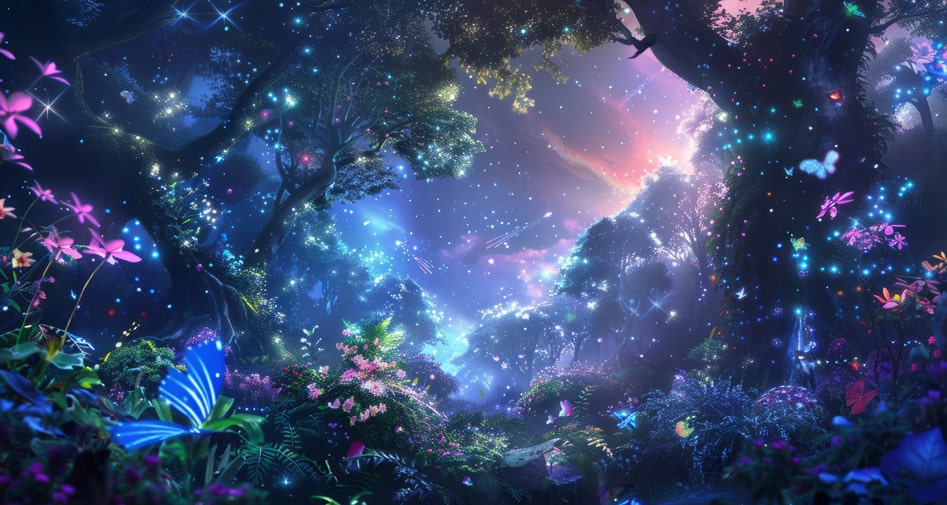
 Facebook
Facebook  Whatsapp
Whatsapp  Messenger
Messenger  Telegram
Telegram Reddit
Reddit

